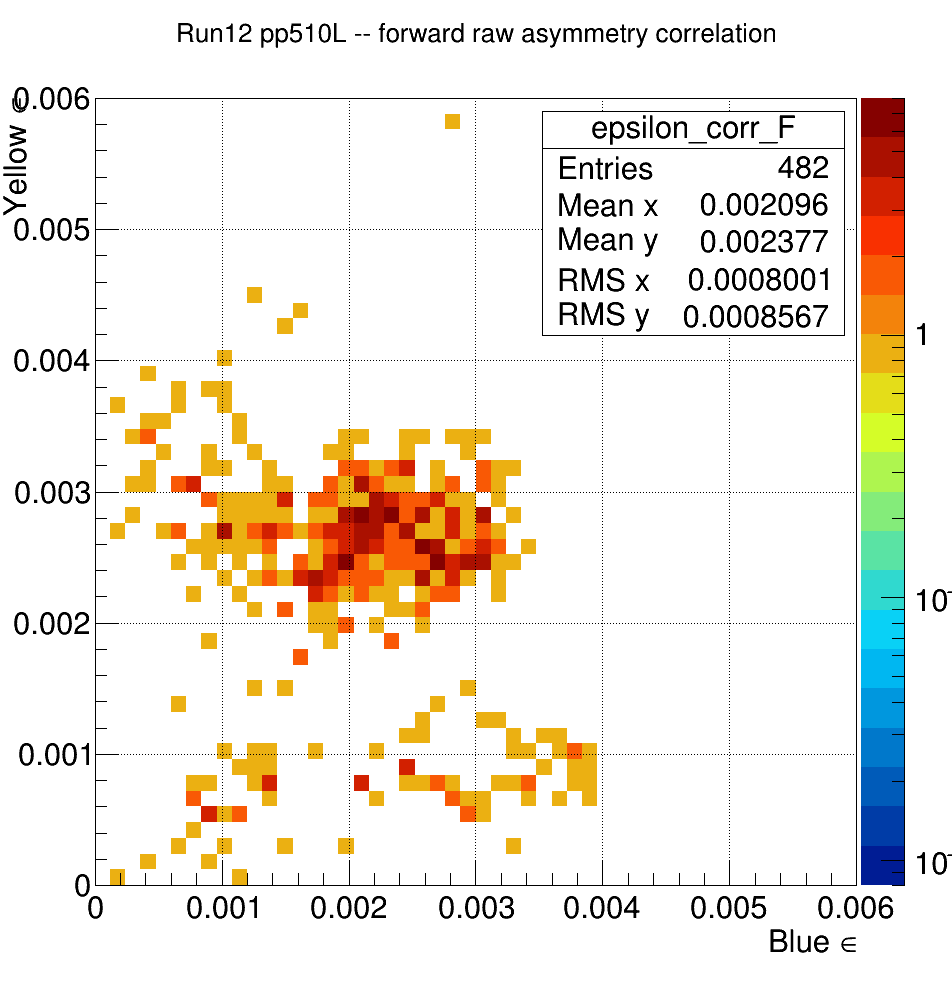- dilks's home page
- Posts
- 2019
- 2018
- December (1)
- November (1)
- October (1)
- August (2)
- July (4)
- June (3)
- May (1)
- April (2)
- March (2)
- February (1)
- January (5)
- 2017
- December (3)
- November (1)
- October (2)
- September (3)
- August (2)
- July (2)
- June (1)
- May (2)
- March (3)
- February (3)
- January (3)
- 2016
- November (2)
- September (4)
- August (2)
- July (6)
- June (2)
- May (3)
- April (1)
- March (2)
- February (3)
- January (2)
- 2015
- December (3)
- October (3)
- September (2)
- August (6)
- June (3)
- May (3)
- April (4)
- March (3)
- February (5)
- January (3)
- 2014
- December (1)
- November (1)
- October (3)
- September (4)
- August (3)
- July (3)
- June (2)
- May (2)
- April (2)
- March (1)
- 2013
- 2012
- 2011
- My blog
- Post new blog entry
- All blogs
A_LL Systematics from Transverse Component of Polarization
The transverse component of the polarization during a longitudinal data-taking period can bias the measured double-spin asymmetry by a transverse double-spin asymmetry, weighted by the transverse component of the polarization. In short, the systematic can be quantified as:

where ![]() is the transverse component of the polarization,
is the transverse component of the polarization, ![]() is the transverse raw single-spin asymmetry measured by the ZDC, the superscripts B and Y are for blue and yellow beams, repsectively, the subscripts L and T indicate asymmetry is measured during longitudinal data-taking period or during a transverse data-taking period, respectively, and finally
is the transverse raw single-spin asymmetry measured by the ZDC, the superscripts B and Y are for blue and yellow beams, repsectively, the subscripts L and T indicate asymmetry is measured during longitudinal data-taking period or during a transverse data-taking period, respectively, and finally ![]() , which is just equal to
, which is just equal to ![]() when we average over azimuth.
when we average over azimuth.
For derivation details, click here
For runs 12 and 13, the blue and yellow transverse raw SSAs seen in the ZDC for the set of runs used in the FMS A_LL analysis intersected with the set of runs analyzed in ZDC polarimetry is shown below:
- vertical axis is yellow beam epsilon, horizontal is blue beam epsilon
- left is run 12, data obtained from http://online.star.bnl.gov/scaler2012/polarimetry/asym/runs.txt
- right is run 13, data obtained from http://online.star.bnl.gov/scaler2013/polarimetry/asym/runs.txt

.png)
And here is run 11 transverse 500 GeV, data from http://online.star.bnl.gov/scaler2013/polarimetry/asym/runs.txt
.png)
------------------------------------------------------------------------------------------------------------------------------------------------------------------------------------------------------------------------------------------------
Run 11 500 GeV transverse -- pion pT distribution; the constant fits to the asymmetries, shown below, are restricted to 3 < pT < 10 GeV
.png)
.png)
.png)
------------------------------------------------------------------------------------------------------------------------------------------------------------------------------------------------------------------------------------------------
Using the run 11 values for the ![]() values (may not be the right thing to do, but doing a more "correct' thing won't change the final answer by much)
values (may not be the right thing to do, but doing a more "correct' thing won't change the final answer by much)
Also just using ![]() for the transverse DSA (averaging over azimuth). The systematics' contribution to A_LL uncertainty is
for the transverse DSA (averaging over azimuth). The systematics' contribution to A_LL uncertainty is


- dilks's blog
- Login or register to post comments
